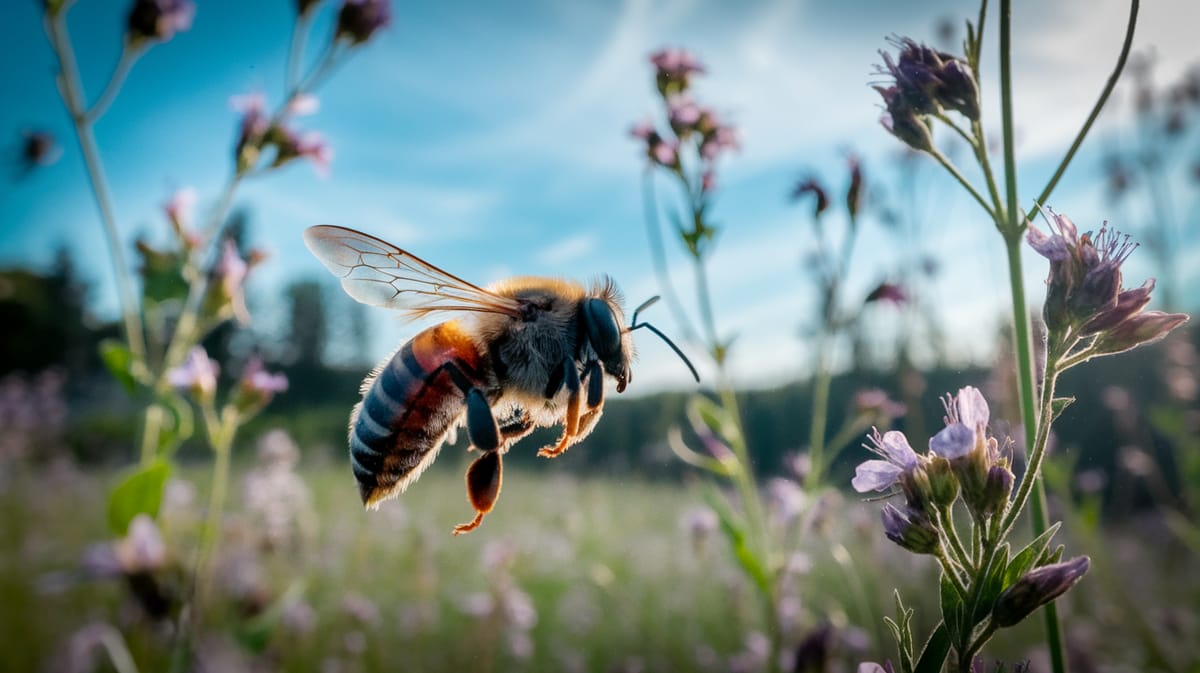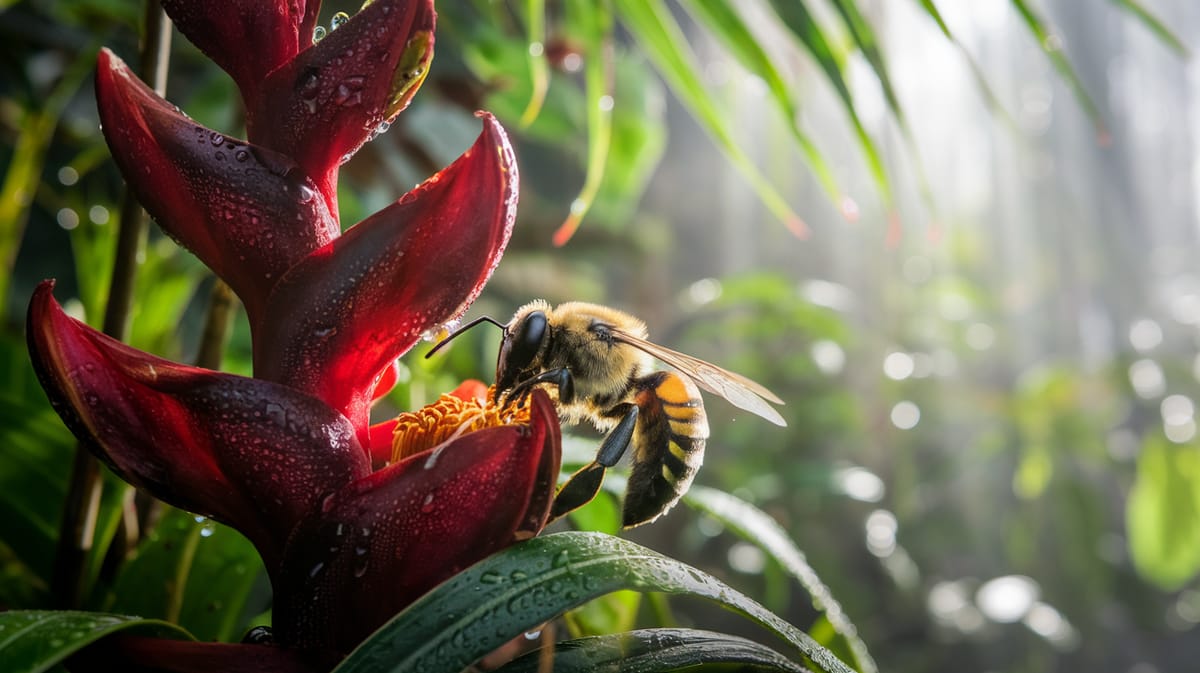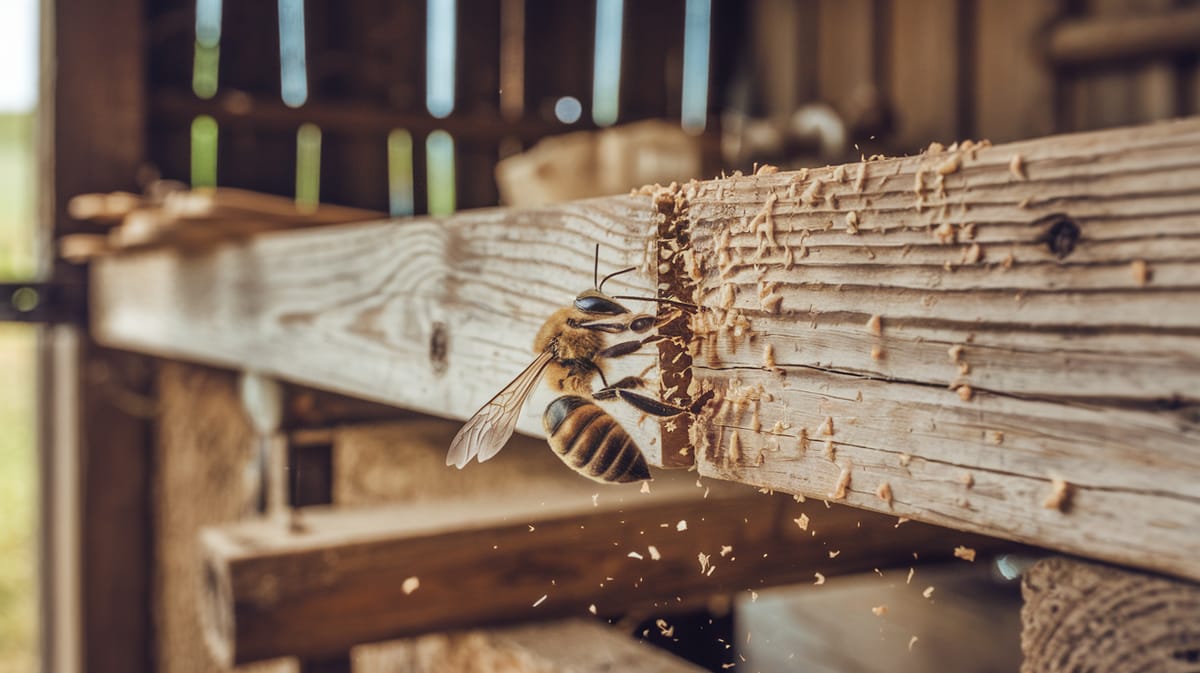Carpenter Bee
Buzzing architects of nature, Carpenter Bees craft intricate nests in wood, playing a vital role in pollination. Their solitary nature and distinctive black and yellow bodies set them apart.

Key Insights at a Glance
Did You Know?
Taxonomy & Classification
Carpenter bees are master wood carvers, using their robust mandibles to bore into wood for nesting, a trait linked to their unique ecological niche. Let's understand the evolutionary journey and classification of these remarkable pollinators.
Global Presence
Carpenter bees, represented by over 500 species globally, thrive in diverse habitats from tropical to temperate regions.
Ancient Lineage
Originating around 40 million years ago, carpenter bees have adapted to various climates, showcasing resilience and evolutionary success.
Lifecycle and Growth
A remarkable journey of transformation from Egg to Adult.
Egg
Carpenter bees lay eggs in wooden tunnels, where they are protected by pollen and nectar provisions for larval development.
Larva
Larvae feed on pollen and nectar, growing rapidly within the secure wooden chambers before transitioning to the next stage.
Pupa
In this stage, larvae develop into pupae, undergoing metamorphosis to emerge as fully formed adult bees.
Adult
Adults emerge capable of mating and foraging, with strong mandibles for boring into wood to create nests.
Dietary Habits
A proficient forager with specialized adaptations, this insect primarily gathers nectar while occasionally seeking pollen from various flowers.
| DIET TYPE | DESCRIPTION |
|---|---|
| Primary Diet | Primarily relies on nectar from flowering plants, using its long tongue to access deep blossoms. |
| Secondary Diet | Collects pollen as an additional protein source, which is crucial for larval development and energy. |
| Occasional | Sometimes consumes sap from trees or shrubs, especially when other food sources are scarce. |

Behaviour and Adaptations
Discover the fascinating adaptations that allow the Carpenter Bee to thrive in its environment.
Wood Boring Ability
Expertly drills into wood to create nest tunnels.
Pollen Collection
Gathers pollen using thick, hairy bodies for efficient pollination.
Territorial Defense
Aggressively guards nesting sites against intruders to protect offspring.
Ecosystem Impact
Vital role in ecological balance and sustainability.
Efficient Pollinator
Carpenter Bees enhance plant reproduction by pollinating various flowers and crops.
Soil Aeration
They improve soil health by creating burrows, enhancing water and nutrient flow.
Biodiversity Support
Their actions help maintain diverse plant communities, supporting a variety of wildlife.
Conservation Challenges
Understanding and addressing the major threats to Carpenter Bee populations.
Habitat Loss
Deforestation and urbanization reduce nesting sites for Carpenter Bees.
Pesticide Use
Chemical exposure disrupts bee health and colony stability.
Climate Change
Altered weather patterns affect foraging and reproductive cycles.
Frequently Asked Questions
How long do Carpenter Bee live?
Carpenter bees typically live for about one year. During this time, they go through stages of development from egg to adult. Females can be seen creating nests in spring, and the new generation emerges in late summer.
What do Carpenter Bee eat?
Carpenter bees feed on nectar and pollen from various flowering plants. They play a significant role in pollination, although they can sometimes cause damage to wooden structures by nesting in them.
Are Carpenter Bee poisonous?
Carpenter bees are not poisonous. They pose minimal risk to humans as they do not inject venom. Only female carpenter bees can sting, and they do so only if provoked.
Are Carpenter Bee endangered?
Carpenter bees are not currently considered endangered. They are widespread and commonly found in various regions. Conservation efforts focus more on protecting their natural habitats and ensuring they have access to flowering plants.
What do Carpenter Bee symbolize?
Carpenter bees often symbolize resourcefulness and hard work. In some cultures, they are associated with persistence due to their nesting behavior. Observing their activity can also signify a time to focus on personal or professional projects.
Do Carpenter Bee bite?
Carpenter bees do not bite. They can sting, but only females have this capability. Stinging occurs only when they feel threatened. Males are often seen hovering nearby but are harmless as they lack stingers.
What color are Carpenter Bee?
Carpenter bees are generally black and yellow. Their bodies are robust with shiny black abdomens. Unlike bumblebees, their abdomen lacks dense hair. This coloring helps differentiate them from other bee species.
Does a Carpenter Bee have wings?
Yes, carpenter bees have wings. They possess two pairs of wings that allow them to fly. These wings are translucent and help them maneuver while foraging for nectar and pollen.
What does a Carpenter Bee look like?
Carpenter bees resemble bumblebees but have a shiny, hairless black abdomen. They are large, robust, and have a yellow and black coloration. Their thorax is covered with bright yellow hair, distinguishing them from other bee species.
Is a Carpenter Bee an insect?
Yes, a carpenter bee is an insect. It belongs to the order Hymenoptera, which includes bees, wasps, and ants. As insects, they have six legs, a three-part body, and two pairs of wings, making them an essential part of the ecosystem.
Related Insects
Discover insects with similar characteristics to Carpenter Bee - including shared habitats, diets, and taxonomic classifications
Share this profile
Help others discover Carpenter Bee
